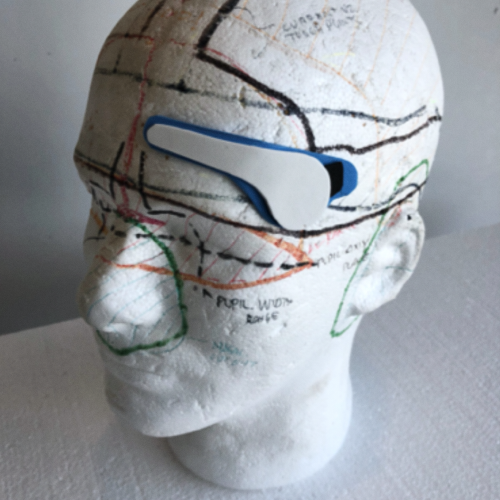For many medtech startups, the “valley of death” isn’t just about getting through clinical trials or securing FDA clearance; it’s about figuring out how your innovation will actually get paid for once it’s on the market. Without a clear path to medical device reimbursement, even the most clinically superior product can languish, unable to reach the patients who need it most. This is why understanding the payer landscape for medical technology and developing a robust strategy from day one is absolutely critical.
The “No Code, No Pay” Principle: Why Early Strategy Matters
Imagine building a beautiful, complex house, only to discover there’s no road leading to it. That’s what a lack of reimbursement strategy can feel like. In healthcare, the adage is often “No Code, No Pay.” If your device or procedure doesn’t have a specific billing code (like CPT codes for medical devices or HCPCS codes for medtech), or if it doesn’t align with existing payer coverage policies, getting paid for its use becomes incredibly difficult, if not impossible.
The complex ecosystem of payers – government programs like Medicare and Medicaid, and a myriad of private insurers – each have their own rules, policies, and timelines. Waiting until after regulatory clearance to consider reimbursement is a dangerous gamble that can delay market entry by years, costing millions and draining investor confidence.
Developing Your Medtech Reimbursement Strategy: A Step-by-Step Approach
A successful reimbursement strategy is built on several interconnected pillars:
-
Step 1: Clinical Value vs. Economic Value – Proving Your Worth
It’s not enough for your device to be clinically effective. Payers need to see economic value. Does your technology reduce hospital stays? Prevent readmissions? Lower the need for more expensive, invasive procedures? Improve quality of life in a way that reduces long-term healthcare costs? Your clinical trials should be designed to generate evidence that speaks to both clinical efficacy AND economic benefit. This is the domain of health economic outcomes research (HEOR), which plays a vital role in painting a compelling value proposition for payers.
-
Step 2: Identifying the Payer Pathway – Who Pays for What?
You need to understand who will be paying for your device and how.
- Government Payers: Medicare and Medicaid often set benchmarks that private insurers follow. Understanding their coverage criteria is foundational.
- Private Insurers: Each has unique policies. Some may be more amenable to innovation, especially if it demonstrates clear cost savings or superior outcomes.
- Direct-to-Patient: Is your device something a patient might pay for directly, perhaps out-of-pocket, or with a clear benefit that justifies the cost? (Less common for complex medtech).
-
Step 3: Coding Strategy – Your Device’s Language of Payment
This is the technical heart of reimbursement:
- Existing Codes: Can your device be billed under an existing CPT (Current Procedural Terminology) code (for procedures) or HCPCS (Healthcare Common Procedure Coding System) code (for products/services)? This is the easiest path.
- New Codes: If no existing code fits, you might need to apply for a new code. This is a lengthy process.
- Category III CPT codes: Temporary codes for emerging technologies, allowing for data collection.
- Category I CPT codes: Permanent codes for widespread, established procedures.
- HCPCS codes: For durable medical equipment, prosthetics, orthotics, and supplies.
- Code Stacking: Sometimes, multiple codes are used to describe a complex procedure involving your device.
-
Step 4: Coverage Strategy – Getting Approval to Pay
Even with a code, payers need to decide if they will cover your technology for their beneficiaries. This involves submitting evidence (clinical data, economic studies) to influence their medical policy decisions. This is where your HEOR data becomes crucial.
-
Step 5: Payment Strategy – How Much Will You Get?
Once covered, what’s the payment rate? This can involve negotiating rates directly with private insurers, or adhering to set rates from government payers. Understanding different payment methodologies (e.g., diagnosis-related groups or DRGs, per diem rates, fee schedules) is key.
Early-Stage Considerations for Medtech Startups
Proactivity is your best friend.
- Integrate Reimbursement into Product Development: Can your device be designed to fit existing codes? Can its use reduce the need for more costly procedures, thereby appealing to payers?
- Design Clinical Trials for Reimbursement: Don’t just focus on safety and efficacy for regulatory approval. Build in endpoints that generate data for economic value, quality of life improvements, and comparative effectiveness against current standards of care.
- Build a Compelling Value Proposition for Payers: This is different from your value proposition to clinicians or patients. Payers care about cost-effectiveness, risk reduction, and population health outcomes.
Common Pitfalls and How to Avoid Them
- Ignoring Reimbursement Until Too Late: This is the most common and damaging mistake.
- Underestimating Complexity and Timeline: Obtaining coverage and adequate payment can take years.
- Lack of Evidence for Economic Value: Focusing solely on clinical data without considering the financial impact on the healthcare system.
- Assuming a Code Means Coverage: A code is necessary but not sufficient.
How a Virtual Incubator Can Guide You
The reimbursement maze is daunting, but you don’t have to navigate it alone. A virtual incubator like iolifescience.com can be an invaluable partner by:
- Connecting with Reimbursement Experts: Providing access to consultants with deep knowledge of coding, coverage, and payment strategies.
- Assessing Market Access Hurdles Early: Helping you identify potential reimbursement challenges during your product’s conceptual phase.
- Refining Your Value Story for Payers: Guiding you in articulating the economic benefits of your innovation in a language that resonates with insurers.
- Strategic Planning: Assisting in designing clinical studies that generate the evidence required for successful reimbursement.
Conclusion
For medtech startups, understanding and proactively addressing medtech reimbursement strategy is as fundamental to success as securing intellectual property or achieving regulatory clearance. By integrating reimbursement considerations early into your product development and clinical trial design, you transform a potential roadblock into a well-defined pathway. This proactive approach ensures that your life-changing medical technology doesn’t just reach the market, but also reaches the patients who stand to benefit most, sustainably and effectively.



